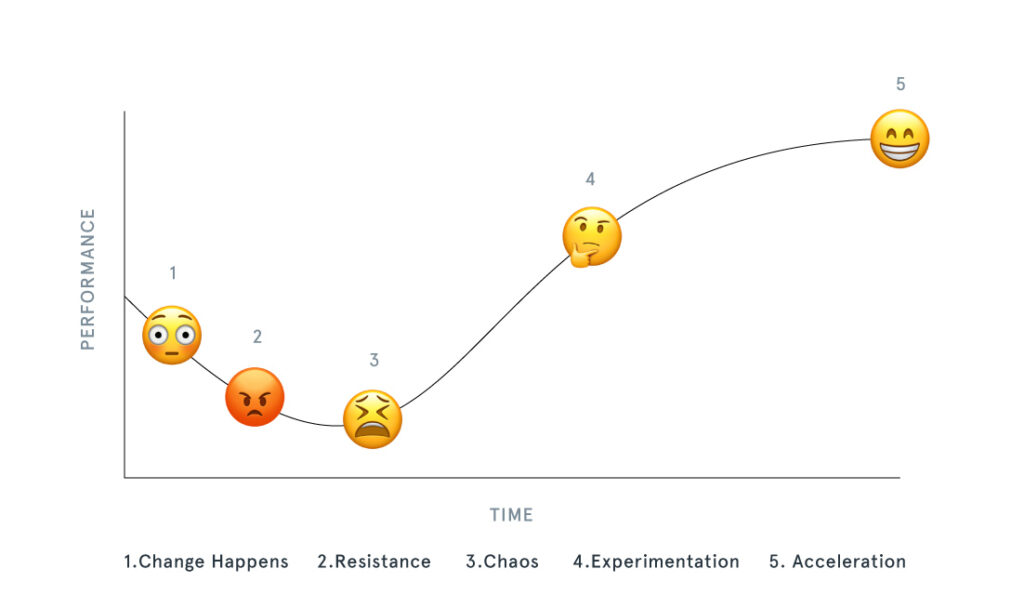by Opal Marketing
“Nothing remains constant except change itself.” – unknown
As the well-known adage goes, change is inevitable.
Some of us embrace it while others resist. Managed well, change can be incredibly impactful and transformative. It gives people the opportunity to find better ways to work or challenge the status quo.
For marketers, change is a fact of life. Campaigns can change on a dime. Deadlines and budgets can shift and some ideas never make it to market. For marketers who work in Opal, change is often met with optimism and order. But not all teams who work in Opal are similar and the path to becoming champions of change, vs. those who are more reactive or resistant to change, is not a straight line. For these reasons alone, marketing change management is absolutely worthy of study.
For the past eight years, our customer success team at Opal has worked with some of the brightest marketers in the world on some of the world’s biggest brands (from Starbucks to Target to Microsoft). From our perspective, change management in marketing is a critical component to achieving success.
Marketing teams are inundated with tools, spreadsheets, calendars and whatever the new “must-have” software is. So introducing a new platform that is to become the “single source of truth” for complex teams requires a thoughtful approach to change management.
Each year we onboard hundreds of enterprise marketing teams across the world to the Opal Platform. Many of these teams knew that collaboration was an area that needed improvement.
Here are seven change management lessons learned that our customers have found most successful since adopting Opal as their marketing collaboration platform.
1. Start with the Why
There is nothing more powerful to motivate and inspire change than to have your leader start very simply with why a team or organization needs to change. When marketing leaders open up and share specific stories of when things fell apart in their process due to inefficiencies, this creates a sense of urgency and hope for what’s possible for the future when everyone is working better, together.
Then, focus on the future state and paint the picture of what Opal will do for your team. Highlight specific and relevant use cases that will make everyone’s job easier and get people excited about a future where everyone is on the same page.
2. Co-create new processes, together
People often support what they help to influence, so provide your team with the opportunity to become a part of positive change by defining the new processes and configurations. We recommend that you identify key influencers and users to become part of the configuration process and provide them with early access to the platform to let their decisions take form.
Bounce ideas off them, ask for their input and let them co-create the new workflows so that they’ll be more invested in a successful launch. This change management tip will help to accelerate adoption by ensuring your team is part of the solution from the start.
3. Activate your early adopters
Support and nurture those early adopters. They are your change advocates and will be key evangelists throughout implementation and beyond. Bring them in early to the on-boarding process, let them test ideas and immerse themselves in how the platform works.
At launch, these are the key people who can stand in front of other members of your team to confidently explain answers to questions and truly advocate that working in Opal is a better way of working for everyone. For our largest customers with diverse teams across the globe, developing an internal advocacy program has been incredibly successful. This is one of the biggest change management lessons learned.
4. Set clear expectations and best practices
When rolling out changes across marketing teams, create a communication plan that includes new processes, practices and expectations. This is a critical component to your implementation roadmap. The goal is to make sure everyone involved clearly understands this new approach, what is expected of them, and how to navigate working in a new platform.
Here are just a few examples of clear expectations and best practices our customers have found helpful when first working in Opal:
- All content is kicked off with a planning board.
- All content “must be in Opal to be real” by a certain date.
- All content review meetings must leverage Opal as the single source of truth.
- Leverage Opal Presentations for all content calendar review meetings.
- All new campaigns should launch with a “story kick-off meeting” to review the objectives, creative brief and major milestones.
- The planning board is reviewed as part of the campaign post mortem.
A message sent isn’t always a message received, so provide multiple touchpoints to reinforce expectations from internal champions of your new process and opportunities to share best practices across teams.
We have found that holding “Opal office hours” or an Opal community Slack or Teams channel is a great way to share best practices, create a learning community and experiment with new functionality together.
5. Embrace the change and learning journey

Recognize that learning a new robust platform is a journey and is not a one-time event with a linear path to success. In fact, the period immediately after a launch is pivotal, so keep an eye on the change curve dip that can come along with learning how to work in a new platform. Provide teammates with ongoing learning opportunities, a forum to share feedback, and support the milestones across their change journey.
6. Define how you will measure success
Knowing what you want to achieve from bringing aboard a new platform is crucial to having success. Typically, this success looks like a direct answer to the pain points that made you seek out a solution in the first place. You can define that success qualitatively or quantitatively.
For Opal, qualitative success might look like teams reporting better cross-functional visibility or having more insight into how the brand shows up in the market.
However, some qualitative metrics to consider include:
- How many boards, stories, moments, and content have been created in Opal?
- How many Opal Presentations have been created?
- How much faster is content produced?
- How much less time do approvals take?
- How many meetings are run utilizing Opal?
- How much content has been repurposed?
7. Evaluate and simplify your MarTech ecosystem
Throughout your change management journey, think about your greater ecosystem and how your platforms or tools work (or don’t work) together from a holistic perspective. An overly complex or disconnected ecosystem causes duplication, change fatigue and user confusion, which can be hard to overcome.
Gaining clarity on the current state of your ecosystem and key workflows across platforms will help to optimize your tech stack, maximize value and gain greater efficiencies across your marketing organization. Adding a powerful new software can be the perfect catalyst for taking a look at what’s working and what isn’t.
After the change, comes the rainbow
Once you’ve made the decision to change the way your team collaborates, you are well on your way to a better way of working for all. It is important to remember that you are not alone in your change management journey. Change management can be a very positive experience, though it’s key to prepare for and consider the bumps you will find along the way.
The more you plan and take action in advance of a change, the more likely you and your team will be prepared to understand and navigate the emotional and intellectual hurdles that are a part of all change management.
Because a future where marketers work better, together, is possible… we just have to embrace the change.

